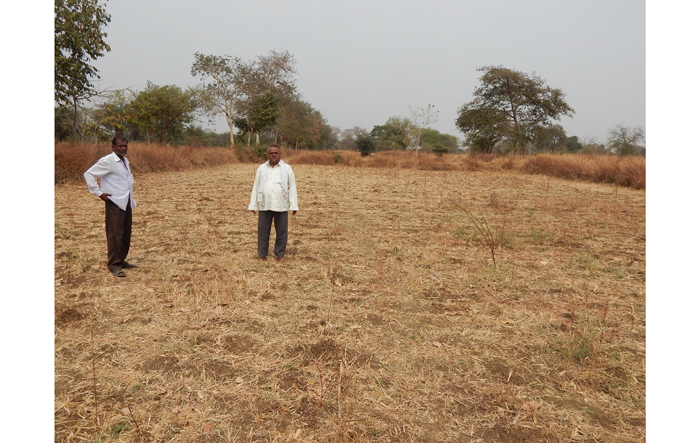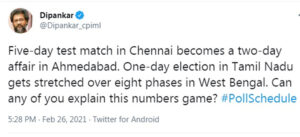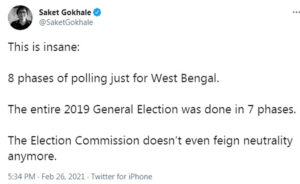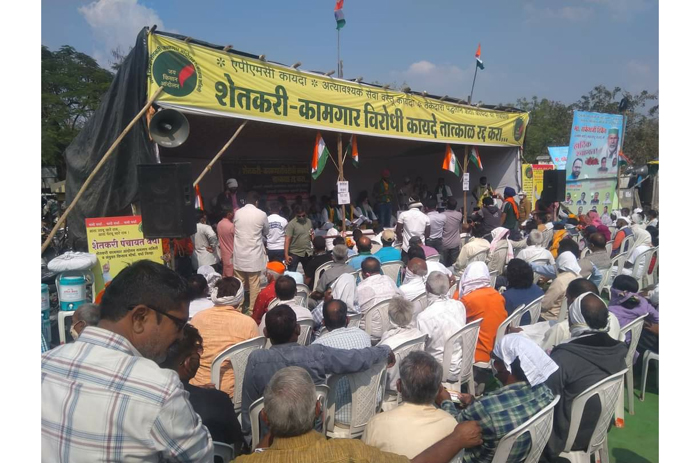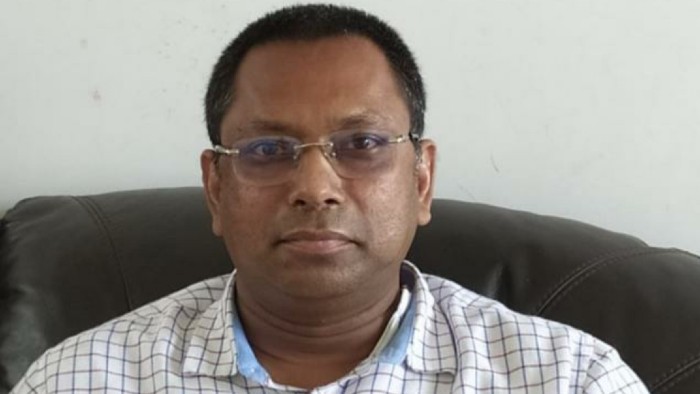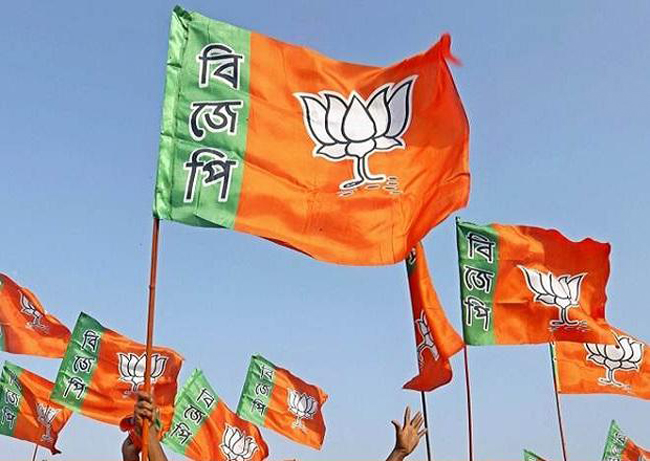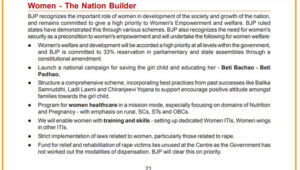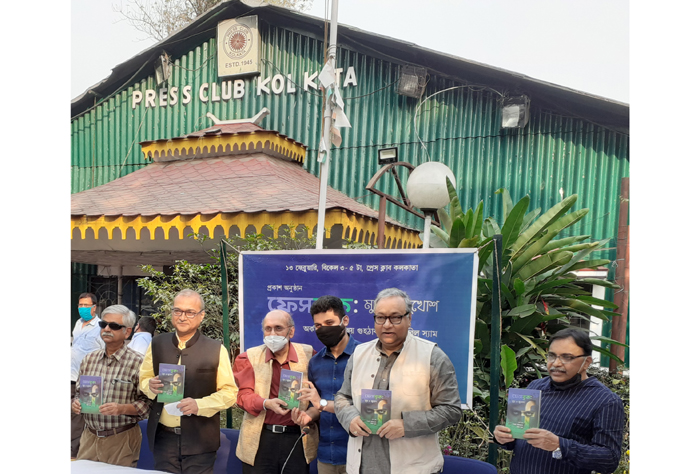पिछली 9 फरवरी को वाणिज्य एवं उद्योग मंत्री पीयूष गोयल ने कहा कि देश में चल रही एमएसपी (न्यूनतम समर्थन मूल्य) प्रणाली पूरी तरह डब्ल्यूटीओ (वर्ल्ड ट्रेड ऑर्गनाइज़ेशन) के अनुरूप है. दरअसल, मंत्री से पूछा गया था कि क्या भारत में चल रही एमएसपी प्रणाली डब्ल्यूटीओ के अनुरूप है. कारण यह कि डब्ल्यूटीओ के कुछ सदस्य देशों ने आरोप लगाया है कि भारत की एमएसपी व्यवस्था बाजार को बिगाड़ने वाली है. ये सदस्य देश भारत सरकार के उस बयान के विरोध में हैं जिसमें सरकार ने आंदोलन कर रहे किसानों को आश्वासन दिया है कि एमएसपी था, है और रहेगा. केंद्र सरकार के इस दावे की पृष्ठभूमि में जाएं तो विश्व व्यापार के नियम के तहत डब्ल्यूटीओ सदस्य देश का खाद्य सब्सिडी बिल 1986-88 के संदर्भ मूल्य के आधार पर 10 प्रतिशत उत्पादन मूल्य से अधिक नहीं होना चाहिए. हालांकि, डब्ल्यूटीओ व्यवस्था के शांति उपबंध (पीस क्लॉज) में यह प्रावधान भी दिया गया है कि कोई विकासशील देश 10 प्रतिशत से अधिक सब्सिडी दे सकता है. लेकिन, यह व्यवस्था तब तक के लिए है जब तक खाद्य-भंडारण मामले का कोई स्थायी समाधान नहीं निकाल लिया जाता है. इस मामले में वाणिज्य सचिव अनूप वधावन का कहना है कि भारत की सब्सिडी डब्ल्यूटीओ सीमा के भीतर है.
वाणिज्य एवं उद्योग मंत्री की यह प्रतिक्रिया भारत में एमएसपी पर सरकार और किसानों के बीच चल रहे विवाद को भी समझने के लिए महत्त्वपूर्ण हो सकती है. दरअसल, केंद्र सरकार का दावा है कि वह किसानों को स्वामीनाथन आयोग के अनुसार निर्धारित एमएसपी दे रही है. वहीं, आंदोलन कर रहे किसान नेताओं का आरोप है कि इस मामले में सरकार सही नहीं है. एमएसपी का सच क्या है और एमएसपी पर सरकार बनाम किसानों के बीच चल रही इस लड़ाई में कौन कितना सही है? यह जानने के लिए पहले हमें सारांश में यह जानना आवश्यक होगा कि एमएसपी क्या है और इसे निर्धारित कैसे करते हैं?
वर्ष 1965 में गठित कृषि लागत व मूल्य आयोग कुल 23 फसलों की एमएसपी घोषित करने के लिए हर साल मूल्य नीति रिपोर्ट बनाती है. एमएसपी के पीछे उद्देश्य होता है कि किसानों को उनकी अपनी फसल पर खर्च की गई लागत से अधिक मूल्य मिले और वे बिचौलियों के शोषण से भी बचे रहें. साथ ही यह माना जाता है कि इससे बाजार में अनाज के मूल्यों में स्थिरता आती है. किसी फसल की एमएसपी निर्धारित करने के लिए सबसे पहले हर राज्य से उसकी औसत लागत निकाली जाती है. इसके बाद अलग-अलग फार्मूले के हिसाब से इसका अलग-अलग निर्धारण किया जा सकता है और फिर सरकार निर्धारित एमएसपी के अनुसार किसानों से उनकी फसल खरीदती है. दरअसल, किसी फसल की एमएसपी को निर्धारित करने के लिए सरकार द्वारा इस्तेमाल में लाए जाने वाले इन्हीं फार्मूलों को लेकर केंद्र और किसान नेता आमने-सामने हैं. सरकार अभी ए2+एफएल फार्मूले से फसलों की एमएसपी निर्धारित कर रही है. इसमें उत्पादन के लिए किसानों द्वारा किए गए सभी तरह के नकदी खर्च जैसे बीज, खाद, ईंधन और सिंचाई आदि की लागत जोड़ी जाती है. साथ ही इसमें पारिवारिक मेहनताना भी शामिल होता है. दूसरी ओर, किसान नेताओं का कहना है कि सरकार उन्हें जो एमएसपी दे रही है वह स्वामीनाथन आयोग के सी2 फार्मूले के हिसाब से नहीं है. इसलिए उन्हें एमएसपी में खेत की जमीन का किराया और कुल कृषि पूंजी पर लगने वाला ब्याज नहीं मिल पा रहा है. एमएसपी के अनुचित निर्धारण के अलावा सीमित किसानों को ही इसका लाभ मिल पाना और संग्रहण से लेकर खरीद तक की सार्वजनिक प्रणाली तथा उत्पादों की समय पर खरीद से जुड़े कई प्रश्न हैं जिन्हें आधार बनाकर किसान नेता सरकार से न्यूनतम समर्थन मूल्य मांग रहे हैं. इनके अलावा एमएसपी को लेकर चल रही इस बहस से कुछ बड़े प्रश्न भी निकले हैं.
इनमें से एक महत्त्वपूर्ण प्रश्न यह है कि जैव-विविधता के लिए गेंहू-धान उत्पादकों को हतोत्साहित करना कितना सही? दरअसल, 23 फसलों की सूची में सरकार एमएसपी पर मुख्यत: गेंहू और धान की खरीदी करती है. इससे गेंहू और धान उत्पादक किसानों को बहुत अधिक प्रोत्साहन मिलता रहा है. आज स्थिति यह है कि देश में गेंहू और धान की पैदावार सरप्लस है. कई जानकार फसलों की जैव-विविधता, खाद्य-संग्रहण और उसके वित्तीय प्रबंधन की दृष्टिकोण से इस स्थिति की आलोचना भी करते हैं. लेकिन, आखिरी बात यही कि फसलों की जैव-विविधता के लिए गेंहू और धान के उत्पादन को घटाने की दलील किस सीमा तक सही है?
इस बारे में कृषि विशेषज्ञ प्रोफेसर एमएस राठौर कुछ कारणों से गेंहू और धान के सरप्लस पैदावार को ठीक नहीं मानते हैं. वे कहते हैं कि साठ के दशक में जब एमएसपी लागू नहीं हुई थी तब भुखमरी का दौर था और इसलिए बड़े पैमाने पर गेंहू और धान के उत्पादन की दरकार थी. इस बारे में वे बताते हैं, “कुछ उत्पाद होते हैं जिनकी मांग हमेशा बनी रहती है, जैसे नमक. नमक का कितना भी मूल्य बढ़े, पर लोग एक निश्चित मात्रा में इसे खरीदेंगे ही. इसी आधार पर साठ के दशक में एक अध्ययन किया गया था जिसमें पता चला कि भारत में कुछ अन्य उत्पादों के अनुकूल सप्लाई रिस्पॉन्स है. इसका मतलब यह होता है कि यदि किसी उत्पाद की मांग बढ़े तो किसान उस उत्पाद के हिसाब से उसका क्षेत्र बढ़ा लेगा. इसके तहत तब गेंहू और धान की फसलों को प्रोत्साहित किया गया और उनके लिए एमएसपी निर्धारित किया गया. उस समय अकाल की स्थितियां भी थीं तो किसानों को रिस्क फैक्टर से उभारने के लिए भी ऐसा किया गया. उसके बाद सिंचाई के साधन विकसित हुए और परिणाम यह हुआ कि गेंहू और धान के मामले में हम आत्मनिर्भर हो गए. आज यह हालत है कि कई करोड़ टन अनाज का भंडारण हमारे पास है.”
इस स्थिति के आधार पर प्रोफेसर एमएस राठौर जैसे जानकारों का एक पक्ष यह मानता है कि जब देश में गेंहू और धान का भरपूर भंडार है तो सरकारी खरीद के लिए एमएसपी का एक बड़ा बजट महज इन दो फसलों पर क्यों खर्च करना. इसकी बजाय बाजरा जैसी फसलों पर अधिक से अधिक एमएसपी दी जानी चाहिए. इससे फसलों की जैव-विविधता में बढ़ोतरी होगी.
वहीं, भारतीय कृषि से जुड़ी नीतियों को अच्छी तरह से समझने वाले कई किसान नेता इससे भिन्न मत रखते हैं. अखिल भारतीय किसान सभा के नेता अशोक धवले बताते हैं कि फसलों की जैव-विविधता की आड़ में एक खतरनाक दलील वैश्विक स्तर की कॉर्पोरेट लॉबी के समर्थन में दी जा रही है. अशोक धवले कहते हैं, “गेंहू और धान के बदले कुछ दूसरी फसलें उगाओ, यही तो कई साल से अमेरिका भी कह रहा है कि जो फसल उसे चाहिए वह भारत जैसी अर्थव्यवस्था के देश उगाएं और उसे बेचें. बदले में गेंहू और धान वह भारत को बेच देगा. इन दो फसलों के मामले में ही तो हम आत्मनिर्भर हैं और जिसके आयात पर हमें खर्च नहीं करना पड़ता. यदि इसे ही गंवा दिया तो हमें कनाडा, अमेरिका और आस्ट्रेलिया जैसे देशों पर निर्भर रहना पड़ेगा. फिर मोदी जी के आत्मनिर्भर भारत का क्या होगा!”
इस मामले में एक अन्य किसान नेता बादल सरोज के मुताबिक अमेरिका के नियंत्रण में काम करने वाला डब्ल्यूटीओ भी यही चाहता है कि सभी तीसरी दुनिया के देशों पर दबाव डालकर वह एमएसपी रद्द कराए, सरकारी खरीद रद्द कराए, सार्वजनिक राशन व्यवस्था रद्द कराए और कृषि लागत पर दी जाने वाली सब्सिडी भी रद्द कराए. वे बताते हैं, “जिन अमीर देशों के पास पैसा है, उनके पास कई फसलों को उगाने के लिए मौसम और मिट्टी नहीं है. इसलिए वे जिन चीजों को पैदा नहीं कर पा रहे हैं उन्हें भारत जैसे दूसरे देशों में उगाना चाहते हैं, जैसे कुछ साल पहले मध्य-प्रदेश के चंबल के उपजाऊ क्षेत्र में बॉयोडीजल बनाने वाली फसल जैट्रोफा को बढ़ावा दिया गया था.”
इस मुद्दे पर जवाहरलाल नेहरू विश्वविद्यालय, नई-दिल्ली में अर्थशास्त्र के प्रोफेसर विकास रावल मानते हैं कि यदि आप दूसरी फसलों को बढ़ावा देना चाहते हैं तो उसके लिए सबसे पहले खरीद की एक व्यवस्था बनानी पड़ेगी. यदि आप चाहते हैं कि पंजाब और हरियाणा के किसान गेंहू के अलावा कुछ अन्य फसल उगाएं तो केवल अच्छा एमएसपी घोषित करना भर काफी नहीं है. उस फसल की अधिक मात्रा में खरीद करनी भी आवश्यक है. यह ऐसे संभव है कि सरकार खाद्य सुरक्षा अधिनियम के तहत कई परिवारों को दो किलो दाल देना शुरू कर दे. ऐसा हुआ तो पंजाब का किसान दाल भी उगाएगा. यदि हम दाल के मामले में भी आत्मनिर्भर हो गए तो दाल की आयात पर होने वाला कई करोड़ रुपए का खर्च बचेगा और एक बड़ी आबादी को प्रोटीन भी मिलेगा.


